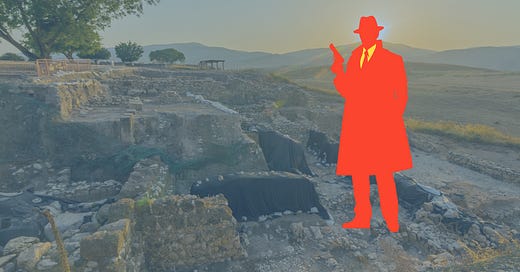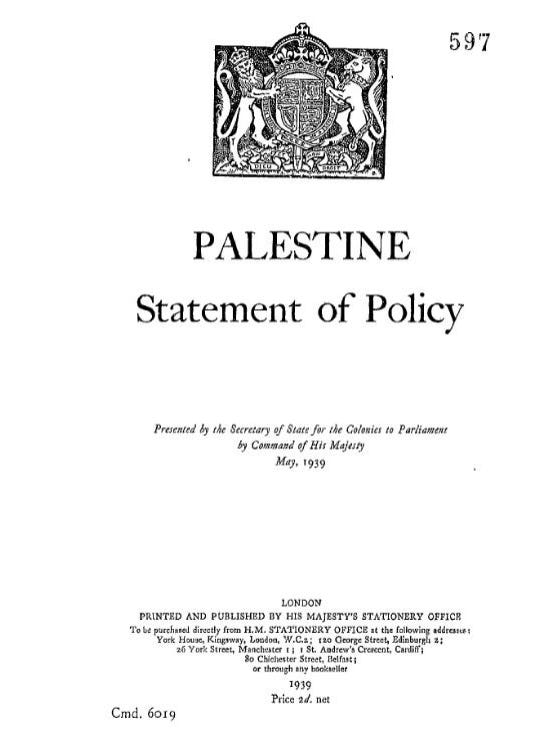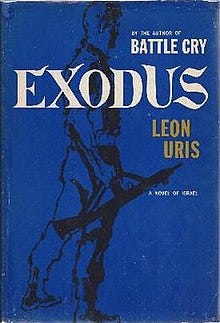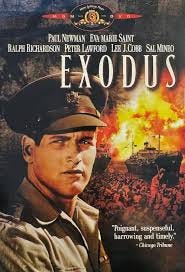Check out the Orthodox Union's parsha learning app: All Parsha for the accompanying shiur to Reading Jewish History in the Parsha.
I always love the story of the meraglim, the spies sent to investigate Israel's land. As a child, when I heard that the Jewish People sent in spies I immediately had visions of Navy SEALS equipped with night vision goggles slowly creeping through the streets of Israel to scope out the situation.
Of course, that is not at all what happened.
These were hardly spies—certainly not of the variety we see in Hollywood, like Ethan Hunt or James Bond. The Torah describes the meraglim as the ambassadors of the Jewish People, the upstanding leaders of each tribe.
So how did it all turn out so poorly?
As you likely already know, the meraglim returned from their mission to the Land of Israel with some concerns. They saw the strong nations who currently occupied the land, and shared their realistic concerns that conquering this land might prove to be more difficult than they expected.
Their report wasn’t even so terrible. So why did God punish the Jewish People so harshly for this incident? For a so-so Yelp review of the Land of Israel, the Jewish People are now condemned to wander the desert for 40 years?
The aftermath of this story is even stranger, and most forget it is even a part of the story of the meraglim. The Torah says that the next morning a group of Jews, known as the ma’apilim, woke up early and were prepared to make a second attempt to enter the Land of Israel.
Moshe warned them, “This effort will not be successful.”
They didn’t listen and entered the Land of Israel anyway only to be immediately killed by the current inhabitants of the land.
What on earth was this group trying to do?! Moshe himself warned them—this is not going to work! What possessed them, after the entire affair of the meraglim, to try to enter the land of Israel anyway?
To understand all this, let’s explore a crucial chapter in the history of the settlement of Israel.
Following the 1917 Balfour Declaration, which promised the Jewish People a national Jewish home, Jewish immigration to the Land of Israel remained challenging. The British government still controlled Israel and its borders and was under an enormous amount of pressure from the Arab community to limit the number of Jewish immigrants to Israel. By the late 1930’s there were nearly half a million Jews in Israel. Even that was too many for many of the Arab residents in the country. Arabs began revolting in 1936 to limit Jewish immigration and protest what they saw as British favoritism for the Zionist project. This led to the White Paper of 1939, which severely curtailed Jewish immigration to Palestine to just 75,000 over the next five years.
As the situation in Europe under Nazi rule continued to deteriorate—Nuremberg laws had been in place since 1935—Jews needed to figure out another way to escape. Between the Nazis and the increasingly oppressively British government, the Jewish community realized that there was no way they would be able to facilitate legal passage for so many in need to immigrate to Israel. If they couldn’t find legal means, they would have to develop illegal means of entry to Israel. Thus began Aliyah Bet, the “secondary” approach to aliyah—without the approval of the ruling governments.
Initially, the notion of “illegal” immigration was not supported by all of the leadership in the Yishuv. Some were concerned that their relationship with the British could be permanently jeopardized. Different factions of Zionists had differing levels of tolerance for aggravating the British, with the Revisionist Zionists certainly the most eager. As the situation in Nazi Germany continued to deteriorate, the disparate efforts of the different Zionist movements began to coalesce around the shared urgency of helping save European Jewry. Chaim Weizmann famously said that the world was becoming divided into two kinds of places: Where Jews cannot live and where Jews cannot leave.
Aliyah Bet was the Zionist answer to an increasingly hostile and anti-semitic world.
By 1944, over sixty clandestine transports had been arranged for Jews to immigrate to Israel. The Mossad did their best to coordinate with contacts inside Nazi Germany to facilitate as many transports as possible. One important figure during this period was Berthold Storfer, a Jew who had converted to Christianity and was given significant powers by the Nazi party to oversee Jewish emigration. History has scrutinized Storfer’s role in saving Jews—he certainly helped save thousands, but his relationship with the Nazi party, including Adolph Eichmann, whose relationship with Storfer was discussed at the Nuremberg trials, always cast a dark shadow over his work.
Undoubtedly, the most famous incident during Aliyah Bet was the story of the SS Exodus, a decommissioned American warship. This was the largest boat secured by the Mossad for Aliyah Bet and carried over four thousand Jews to Israel in 1947—far more than the 500 or so it was designed to transport. Before the SS Exodus, however, could even reach the territorial waters of Palestine, it was intercepted by British ships. A few members of the Exodus were killed in the skirmish with British naval officers and many were injured. Everyone on board was prohibited from disembarking. “The Germans destroyed our families,” members of the ship protested, “don’t you destroy our hopes.”
Tisha Baav was spent on board the boat, captured in a haunting picture where members of the SS Exodus can be seen praying.
Nonetheless, the ship was turned back to sail towards France. They were refused in France as well and most of the passengers were sent back to displaced person’s camps in Germany. This led to a major PR debacle for Britain—sending back a boat of Jewish refugees to Germany was seen by many in the international community as being simply too cruel. The Jewish Agency appealed to the recently formed United Nations, “The Jewish Agency, internationally recognized representative of the Jewish people, desires urgently to invite your attention to the British action in deporting 4,400 Jewish refugees to Germany, the country from which most of them fled as a result of their suffering there.”
Most of the travelers on board the SS Exodus were held in Displaced Person’s camps until 1949 when the British government formally recognized the State of Israel and allowed the remaining survivors to settle there.
The story of the Exodus was later immortalized in the historical fictional account by Leon Uris. His book, which at times strays from the actual historical record, was later made into a feature film starring Paul Newman.
Following the Exodus disaster, another ship, this time a decommissioned Canadian ship attempted to bring several hundred Jewish refugees to Israel. The ship, called Af-Al-Pi-Chen, meaning “Nevertheless,” was a testament to the resolute resistance evinced by Zionist leaders to do their utmost to bring as many Jews to Palestine as possible. While the ship was once again intercepted by British officers, this time the British, in an attempt to avoid a similar PR debacle to the SS Exodus, sent the passengers to nearby Cyprus as they waited for permission for legal entry into Israel.
In total, over 100,000 Jews were saved by the Aliyah Bet movement. The Af-Al-Pi-Chen is currently displayed at Israel’s Clandestine Immigration and Naval Museum in Haifa, which continues to preserve the miraculous story of Aliyah Bet. Despite it all, af al pi chen, the Jewish people never gave up on their hopes to return to Zion.
In Israel Aliyah Bet is called Ha'apala after the Biblical story in our parsha on the ma’apilim, those who tried to clandestinely enter the Land of Israel the morning after the meraglim brought back their news, a story almost 3000 years in the making.
And that of course brings us back to our parsha.
Rav Yaakov Yechiel Weinberg, known as the Seridei Aish, has a powerful essay published in his collection LaPerakim entitled, “נגיד על עמי ישראל,” which discusses the leadership of the meraglim. What exactly was their sin, asks Rav Weinberg. The meraglim, Rav Weinberg explains, were more interested in preserving the status quo than being visionary leaders. It was easier in the minds of the meraglim to continue on their journey in the desert than attempt the herculean feat necessary to settle the Land of Israel. They knew that creating a new society in Israel would create incredible hardships and difficulties—they simply thought maintaining the status quo would be an easier, less taxing task for the Jewish People.
Of course, they were wrong. Leadership requires vision. Protecting the status quo is not how the Jewish People will ever thrive—instead, the Jewish People need leaders who are ready to confront the future.
But it was already too late. The meraglim erred, preserving the status quo in their report. They were not the visionary leaders the Jewish People needed for the opportunity of the moment.
The next morning the ma’apilim woke up and did not want to accept no for an answer. Rav Tzadok has a remarkable teaching about their illicit desire to enter the land of Israel. They did not want to wait for permission. They had holy chutzpah and decided—even without God’s permission—to enter the land and force, so to speak, the next period of Jewish life in Israel.
וע"ז העפילו לעלות אף נגד רצון הש"י כמשז"ל (סנהדרין קה.) חוצפתא מלכותא בלי תגא [ולמדוה מבלעם שאח"כ הסכים הש"י. כי בלעם נסתכל עד עקבתא דמשיחא ולכך ידע סוד זה] פי' כידוע מלכות הוא כנס"י וכתר הוא שורש רצון הש"י ור"ל ממשלה מעצמו בלי רצון הרוצים. והתקרבות כנס"י מעצמם. והם לא הצליחו בזה מפני שאכלוה פגה כמשאז"ל (סוטה מט:) בעקבותא דמשיחא חוצפא יסגא שאז הוא העת לזה [ולעתיד נקבה תסובב גבר ואכ"מ] ולכך אמר להם משה והיא לא תצלח נראה שעצה הוא אלא שלא תצלח ודייק והיא שבכ"מ דרז"ל היא ולא אחרת שיש זמן אחר שמצליח והוא זמנינו זה שהוא עקבי משיחא:
Moshe, however, responds, “והיא לא תצלח” —this effort will not be successful.
Rav Tzadok emphasizes Moshe’s words והיא—this effort will not be successful, but there will come a time when even without the explicit word of God, the Jewish People will be granted the ability to settle the land. A time, says Rav Tzadok, that we are currently living through.
Shabbos Reads — Books/Articles Mentioned
Jews on Route to Palestine 1934-1944: Sketches from the History of Aliyah Bet – Clandestine Jewish Immigration, Artur Patek
On and Off the Beaten Track in… the Af-Al-Pi-Chen Museum, Peter Abelow
Check out All Parsha, where you can find weekly audio of Reading Jewish History in the Parsha and other incredible presenters and amazing features that will enhance your Parsha journey!
Reading Jewish History in the Parsha has been generously sponsored by my dearest friends Janet and Lior Hod and family with immense gratitude to Hashem.














